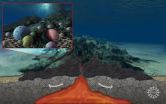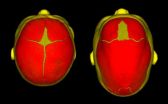(Press-News.org) INDIANAPOLIS -- The approach of the Indianapolis Discovery Network for Dementia -- with contributions from family members, community advocates, health care systems and researchers -- improves dementia care and informs dementia research, according to a new study by researchers from the Regenstrief Institute and the Indiana University Center for Aging Research.
"Collaborative dementia care -- sensitive to local needs and concerns -- combines human interaction of all those involved plus technology. Regular face-to-face meetings of caregivers, clinicians and researchers provide invaluable opportunities to balance human need and the flood of information as we develop and deliver new and innovative dementia care," said Regenstrief Institute investigator Malaz Boustani, M.D., MPH, associate director of the IU Center for Aging Research and IU School of Medicine associate professor of medicine. The senior author of the new study in Clinical Interventions in Aging, a peer-reviewed, open-access online journal, Dr. Boustani is founding director of the Indianapolis Discovery Network for Dementia and sees patients at the Wishard Healthy Aging Brain Center.
IDND's interdisciplinary open-source think-tank implementation of innovations short circuits the lengthy -- typically 17-years, according to Dr. Boustani -- research-to-practice timeline, bringing concepts that improve dementia care to patients in a fraction of that time. This "discovery-to-delivery" approach evolves to meet the changing needs of those it serves.
For example, IDND's Anticholinergic Cognitive Burden Scale, which evaluates the effects of common over-the-counter and prescription drugs on the aging brain, was developed, tested and put into clinical practice within four years. The Healthy Aging Brain Care Monitor, a "blood pressure cuff" for dementia put into patient care within two years of development, functions as a screening, diagnostic and management tool. Both tools are now in worldwide use.
IDND works to halt inappropriate or "bad" medicine; counsel and support families; reduce the cost of care by avoiding unnecessary emergency room visits and hospitalizations; and decreasing the likelihood of long-term care.
"Discovering and testing effective solutions for people with dementia is not enough," Dr. Boustani said. "IDND creates a platform that can be adapted to any locality to disseminate, implement and translate discoveries into practice that will work there -- whether a metropolitan area with large, competing health systems like Indianapolis or a totally different environment. Solutions must be localized to be effective, and they can be. Highly competitive organizations like banks collaborate every day to make financial transactions seamless; diverse health care systems surely can find ways to collaborate to improve lives."
A geriatrician, Dr. Boustani focuses on rapid translation of aging brain research discovery into health care delivery using the lens of complexity science, the tools of medical informatics and the methods of public health epidemiology.
IDND resources are available without charge on the network's website at http://www.indydiscoverynetwork.org/.
"As a geriatrician in community practice, the majority of my patients have dementia. Our close linkage with the researchers at the University through IDND has allowed me to utilize newly developed clinically useful tools early in their development and to provide feedback on their applicability to my patient population," said Patrick Healey, M.D., St. Vincent Health Network.
"The IDND offers a model of collaboration that communities across the country can use to rapidly improve the quality of life for people with dementia and their families. More generally, this is a framework that foundations, government agencies, and health care organizations can support to ensure the relevance and real-world application of scientific research," said Marcus R. Escobedo, MPA, John A. Hartford Foundation program officer. The foundation is America's leading philanthropy with a sustained interest in aging and health.
INFORMATION:
In addition to Dr. Boustani, "Connecting research discovery with care delivery in dementia: the development of the Indianapolis Discovery Network for Dementia" is authored by Amie Frame, MPH, and Stephanie Munger, MPH of the Regenstrief Institute and IU Center for Aging Research; Patrick Healey, M.D., of St. Vincent Health Network; Jessie Westlund, R.N., and Azita Chehresa, M.D., Ph.D., of Community Health Network; Martin Farlow, M.D., of the IU School of Medicine; Ann Marie Hake, M.D., of Eli Lilly and Co.; Mary Guerriero Austrom, Ph.D., of the IU School of Medicine; Polly Shepard, Psy.D., and Corby Bubp, Ph.D., of The Memory Clinic of Indianapolis; Jose Azar, M.D., and Arif Nazir, M.D., of the IU School of Medicine; Nadia Adams, MHA, of Indiana University Health; Noll Campbell, Pharm.D., of Purdue University College of Pharmacy and Wishard Health Services; and Paul Dexter, M.D., of the Regenstrief Institute and IU School of Medicine.
The article can be found at http://www.dovepress.com/articles.php?article_id=11537.
The work was supported by a Paul Beeson Career Development Award in Aging (K23 AG 26770-01) from the National Institute on Aging, The John A. Hartford Foundation, the Atlantic Philanthropies and the American Federation of Aging Research; two individual grants from the National Institute on Aging (P30 AG-10133) (P30 AG-024967); and a grant from the Agency for Healthcare Research and Quality (R01 HS019818-0).
Network's 'it takes a village' approach improves dementia care and informs research, study shows
2012-11-20
ELSE PRESS RELEASES FROM THIS DATE:
1 week at a health spa improves your health, study shows
2012-11-20
(PHILADELPHIA) – Take off those Thanksgiving pounds with a week at a spa retreat. A new study shows that not only are they relaxing and nourishing, but they are safe and a week-long spa stay can correspond with changes in our physical and emotional well-being.
New research from Thomas Jefferson University Hospital evaluated 15 participants before and after their visit to We Care Spa, a health and wellness spa in Desert Hot Springs California, and found the program safe and helped to improve the participants' health. Their complete findings will be available in the ...
New energy technologies promise brighter future
2012-11-20
TAMPA, Fla. (Nov. 19, 2012) – In three studies published in the current issue of Technology and Innovation – Proceedings of the National Academy of Inventors®, innovators unveil creative technologies that could change our sources of energy, change our use of energy, and change our lives.
Untapped energy in the oceans
The kinetic energy in the Florida Current and in Florida's ocean waves can be captured and used, said Howard P. Hanson of the Southeast National Marine Renewable Energy Center at Florida Atlantic University.
"Capturing the kinetic energy of the Florida ...
Lava dots: Rice makes hollow, soft-shelled quantum dots
2012-11-20
HOUSTON -- (Nov. 19, 2012) -- Serendipity proved to be a key ingredient for the latest nanoparticles discovered at Rice University. The new "lava dot" particles were discovered accidentally when researchers stumbled upon a way of using molten droplets of metal salt to make hollow, coated versions of a nanotech staple called quantum dots.
The results appear online this week in the journal Nanotechnology. The researchers also found that lava dots arrange themselves in evenly spaced patterns on flat surfaces, thanks in part to a soft outer coating that can alter its shape ...
Kessler Foundation researchers predict hidden epidemic of neurological disability for India
2012-11-20
West Orange, NJ. November 19, 2012. The 'Global Perspectives' published in the Nov. 20, 2012 issue of Neurology®, the medical journal of the American Academy of Neurology, features "Neurologic Disability: A Hidden Epidemic for India". The authors, a team of US and Indian scientists, detail three emerging trends contributing to this public heath problem and outline measures to stem its growth. Abhijit Das, MD, DM, Amanda Botticello, PhD, MPH, and Glenn Wylie, DPhil, are researchers at Kessler Foundation in West Orange, New Jersey. Kurupath Radhakrishnan, MD, DM, FAAN, is ...
Yeast protein breaks up amyloid fibrils and disease protein clumps differently
2012-11-20
PHILADELPHIA — Several fatal brain disorders, including Parkinson's disease, are connected by the misfolding of specific proteins into disordered clumps and stable, insoluble fibrils called amyloid. Amyloid fibrils are hard to break up due to their stable, ordered structure. For example, α-synuclein forms amyloid fibrils that accumulate in Lewy Bodies in Parkinson's disease. By contrast, protein clumps that accumulate in response to environmental stress, such as heat shock, possess a less stable, disordered architecture.
Hsp104, an enzyme from yeast, breaks up both ...
New study review examines benefits of music therapy for surgery patients
2012-11-20
LEXINGTON, Ky. (Nov. 19, 2012) — A new study review published by the University of Kentucky found that music therapy can be beneficial to patients before, during and after a surgical procedure and may reduce pain and recovery time.
Published in the Southern Medical Journal, the review examined the use of music in the preoperative, intraoperative and postoperative stages of the surgical process, and music was shown to have positive results in all three stages. Patients were less anxious before the procedure and recovered more quickly and satisfactorily after by being exposed ...
'Dark Energy': Life beneath the seafloor discussed at upcoming American Geophysical Union conference
2012-11-20
"Who in his wildest dreams could have imagined that, beneath the crust of our Earth, there could exist a real ocean...a sea that has given shelter to species unknown?"
So wrote Jules Verne almost 150 years ago in A Journey to the Center of the Earth. Verne probably couldn't have imagined the diversity of life that researchers observe today under the ocean floor.
Scientists affiliated with the National Science Foundation (NSF) Center for Dark Energy Biosphere Investigations (C-DEBI) will discuss recent progress in understanding life beneath the seafloor at the American ...
Seattle Children's Research Institute helps identify causes of sagittal craniosynostosis
2012-11-20
Seattle Children's Research Institute, together with an international team of scientists and clinicians from 22 other institutions, have identified two genetic risk factors for the most common form of non-syndromic craniosynostosis, a birth defect in which the bony plates of an infant's skull prematurely fuse. The condition is known as sagittal craniosynostosis and often results in an abnormal head shape and facial features.
The study identified two genes (BMP2 and BBS9) associated with sagittal craniosynostosis that are known to be involved in broader skeletal development.
Results ...
Martian history: Finding a common denominator with Earth's
2012-11-20
Washington, DC — A team of scientists, including Carnegie's Conel Alexander and Jianhua Wang, studied the hydrogen in water from the Martian interior and found that Mars formed from similar building blocks to that of Earth, but that there were differences in the later evolution of the two planets. This implies that terrestrial planets, including Earth, have similar water sources--chondritic meteorites. However, unlike on Earth, Martian rocks that contain atmospheric volatiles such as water, do not get recycled into the planet's deep interior. Their work will be published ...
Faulty development of immature brain cells causes hydrocephalus
2012-11-20
Researchers at the University of Iowa have discovered a new cause of hydrocephalus, a devastating neurological disorder that affects between one and three of every 1,000 babies born. Working in mice, the researchers identified a cell signaling defect, which disrupts immature brain cells involved in normal brain development. By bypassing the defect with a drug treatment, the team was able to correct one aspect of the cells' development and reduce the severity of the hydrocephalus. The findings were published online Nov. 18 in the journal Nature Medicine.
"Our findings ...




